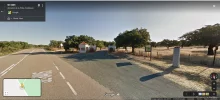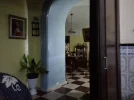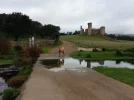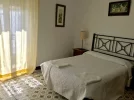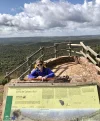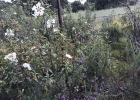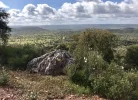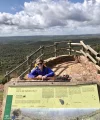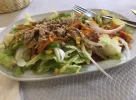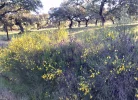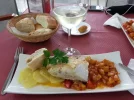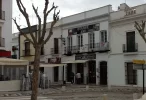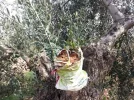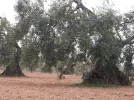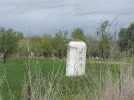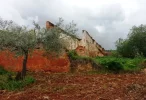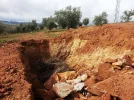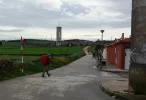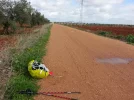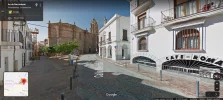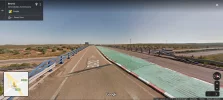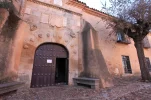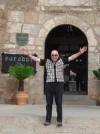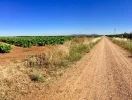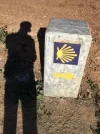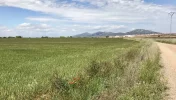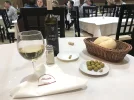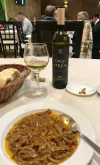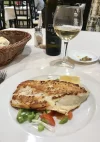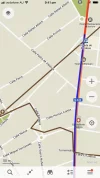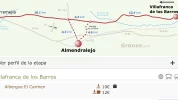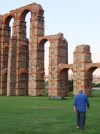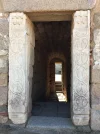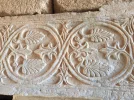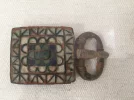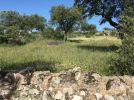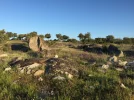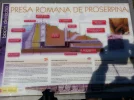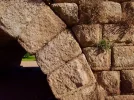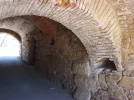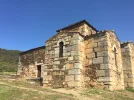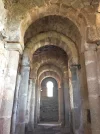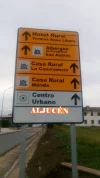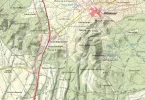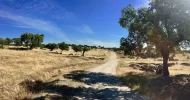- Time of past OR future Camino
- Via Gebennensis (2018)
Via Podiensis (2018)
Voie Nive Bidassoa (2018)
Camino Del Norte (2018)
This year we were going to walk from Lisbon to SdC, after a few shorter walks in France and a week volunteering at SJPdP.
As a result of Covid-19, we are now confined in Melbourne, Australia, and I have been keeping the dream alive by planning 2021 and 2022 (when I am not running after a delightful little two year old grandson ).
).
The reason I mention both 2021 and 2022, is that we are still deciding whether we will just transpose our Portugal planning to 2021, and then walk the VdlP in 2022.
We are both in our 60's, Rachel has had cancer and although she starts the day often stronger than I do, she gets tired by early afternoon, as a result of her treatment and medication. No lullaby needed when she goes to bed!
In 2018, we walked from where she was born in Switzerland to SdC, following the Via Gebennensis, the Voie du Puy-en-Velay, the Voie Nive-Bidassoa, the Camino del Norte (with a detour to Oviedo). 2178km, walked in 133 days with a few rest days. Rachel preferred knowing where we would sleep every night, and that peace of mind came at the expense of flexibility. We also prefer to have a private room, so that she (and I) can get a good night's sleep. Also, we are not walking with sleeping bags, only liners.
So with this in mind, I started planning our VdlP, and at @peregrina2000 's suggestion, and following @C clearly 's footsteps, here's our virtual walk. If this is to happen in 2021, we would start on 22 April 2021, if it is to happen in 2022, we would start earlier, possibly early March 2022.
I'm using Gerald Kelly's guide, I have bought the Wise Pilgrim guide from this forum, and I have been consulting Gronze.
Day 0: Sevilla
We visited Sevilla in February 2019, and stayed a week, during which we explored the Real Alcázar, las Setas, the Cathedral, as well as doing two day trips, one to Cadiz, and the other to Cordoba.
So we're going to stay a couple of days before we start walking (so Day -2 to Day 0 in Sevilla).
Day 1: Seville to Santiponce
We didn't explore the outskirts of Sevilla, and @OzAnnie suggested we see ‘Italica’ the Roman ruins at Santiponce.
So we're going to walk about 10km today, giving us ample time to explore Italica.
Wise Pilgrim also mentions visiting the Monasterio de San Isidoro del Campo.
There are two routes, one via Camas, and the other along the river. Wise Pilgrim refers to it as "it would not be the worst idea to walk with another pilgrim." Gerald Kelly mentions the possibility of encountering "loose dogs". I have cynophobia, and I tend to freeze when any big barking dog (German shepherd size or bigger) runs towards me. The road through Camas goes through an industrial estate. Rachel prefers the river route...
Gronze lists two places to sleep tonight: Alojamiento Como en Tu Casa and Hotel Anfiteatro Romano, the latter also listed by Wise Pilgrim.
Day 2: Santiponce to Guillena
This is a 12.3km day according to Gronze. Once we have passed the highway, it is a straight line to Guillena. Do we cross a ford when we get to the arroyo?
If it's flooded, Wise Pilgrim advises us to take different options, one of which goes through Torre de la Reina. Looking at Google street view, the Plaza Mayor in Torre de la Reina looks nice, but I am not sure it is worth the detour?
In Guillena, for a private room, it looks like there's the Hostal Francés, or the Albergue Luz del Camino which seems to have two bed bedrooms.
And that's the first official stage done!
As a result of Covid-19, we are now confined in Melbourne, Australia, and I have been keeping the dream alive by planning 2021 and 2022 (when I am not running after a delightful little two year old grandson
The reason I mention both 2021 and 2022, is that we are still deciding whether we will just transpose our Portugal planning to 2021, and then walk the VdlP in 2022.
We are both in our 60's, Rachel has had cancer and although she starts the day often stronger than I do, she gets tired by early afternoon, as a result of her treatment and medication. No lullaby needed when she goes to bed!
In 2018, we walked from where she was born in Switzerland to SdC, following the Via Gebennensis, the Voie du Puy-en-Velay, the Voie Nive-Bidassoa, the Camino del Norte (with a detour to Oviedo). 2178km, walked in 133 days with a few rest days. Rachel preferred knowing where we would sleep every night, and that peace of mind came at the expense of flexibility. We also prefer to have a private room, so that she (and I) can get a good night's sleep. Also, we are not walking with sleeping bags, only liners.
So with this in mind, I started planning our VdlP, and at @peregrina2000 's suggestion, and following @C clearly 's footsteps, here's our virtual walk. If this is to happen in 2021, we would start on 22 April 2021, if it is to happen in 2022, we would start earlier, possibly early March 2022.
I'm using Gerald Kelly's guide, I have bought the Wise Pilgrim guide from this forum, and I have been consulting Gronze.
Day 0: Sevilla
We visited Sevilla in February 2019, and stayed a week, during which we explored the Real Alcázar, las Setas, the Cathedral, as well as doing two day trips, one to Cadiz, and the other to Cordoba.
So we're going to stay a couple of days before we start walking (so Day -2 to Day 0 in Sevilla).
Day 1: Seville to Santiponce
We didn't explore the outskirts of Sevilla, and @OzAnnie suggested we see ‘Italica’ the Roman ruins at Santiponce.
So we're going to walk about 10km today, giving us ample time to explore Italica.
Wise Pilgrim also mentions visiting the Monasterio de San Isidoro del Campo.
There are two routes, one via Camas, and the other along the river. Wise Pilgrim refers to it as "it would not be the worst idea to walk with another pilgrim." Gerald Kelly mentions the possibility of encountering "loose dogs". I have cynophobia, and I tend to freeze when any big barking dog (German shepherd size or bigger) runs towards me. The road through Camas goes through an industrial estate. Rachel prefers the river route...
Gronze lists two places to sleep tonight: Alojamiento Como en Tu Casa and Hotel Anfiteatro Romano, the latter also listed by Wise Pilgrim.
Day 2: Santiponce to Guillena
This is a 12.3km day according to Gronze. Once we have passed the highway, it is a straight line to Guillena. Do we cross a ford when we get to the arroyo?
If it's flooded, Wise Pilgrim advises us to take different options, one of which goes through Torre de la Reina. Looking at Google street view, the Plaza Mayor in Torre de la Reina looks nice, but I am not sure it is worth the detour?
In Guillena, for a private room, it looks like there's the Hostal Francés, or the Albergue Luz del Camino which seems to have two bed bedrooms.
And that's the first official stage done!
Last edited:






